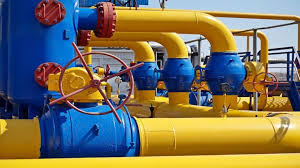Introduction
Indian households and daily commuters may soon feel the heat of rising fuel prices, as the government is reportedly planning a cut in the allocation of Administered Price Mechanism (APM) gas. This subsidized gas is crucial in keeping the prices of Compressed Natural Gas (CNG) and Piped Natural Gas (PNG) affordable. If reduced, it could lead to a chain reaction of price hikes, particularly in metro cities where clean fuel powers public transport and domestic kitchens.
City Gas Distribution (CGD) companies like Indraprastha Gas Ltd (IGL) and Mahanagar Gas Ltd (MGL) are closely watching the situation, as a final government notification is awaited. With APM gas allocation expected to drop significantly, the companies may be forced to rely on more expensive alternatives — ultimately passing on the burden to consumers.
What is APM Gas and Why Does It Matter?
Administered Price Mechanism (APM) gas is domestically produced natural gas supplied at regulated, subsidized prices. It is primarily allocated to sectors where affordability and access are crucial — including public transport (CNG) and domestic cooking (PNG).
This cost-effective gas allows city gas providers to offer relatively lower retail prices, supporting the widespread use of cleaner fuels in Indian cities. A cut in APM allocation means CGD companies must source gas from either imported LNG or market-priced domestic gas — both of which come with a significantly higher price tag.
The Expected Change in APM Allocation
Sources reveal that IGL’s allocation of APM gas for CNG is expected to drop from 51% to just 40%. While an official government notification is still awaited, industry players are already preparing for a shift in fuel sourcing and pricing strategy.
MGL and other gas distributors may also face similar cuts. A source quoted by Moneycontrol mentioned that “APM gas would be replaced by new-well gas,” which is not subsidized and thus more expensive.
How Will This Affect You?
If the cut is implemented without an adequate low-cost alternative, consumers could soon see price hikes in:
- CNG used in auto rickshaws, taxis, and private vehicles
- PNG used in urban homes for cooking
This would increase monthly fuel and utility bills for lakhs of families and also raise operating costs for public transport services that rely on CNG. Ultimately, this price burden could ripple through the economy, pushing inflation higher and undermining clean energy adoption.
CNG Vehicles & Urban Mobility Impact
CNG vehicles — especially in cities like Delhi, Mumbai, and Pune — form a critical component of the urban transport system. From shared auto rickshaws to ride-hailing cabs, many service providers chose CNG for its affordability and lower emissions.
A sudden rise in CNG prices could:
- Reduce profits for commercial drivers
- Push fares up for daily commuters
- Discourage CNG adoption in new vehicles
Domestic Kitchens Could Feel the Burn
PNG is widely used in urban kitchens for its clean burn, safety, and reliability. A price increase could nudge households back toward costlier or polluting alternatives like LPG cylinders or even firewood in extreme cases.
For middle-class and lower-income families, higher PNG bills may force budget adjustments, adding to the current inflationary pressures in essential goods and services.
What’s the Government Planning?
While the plan to reduce APM allocation is not final, energy ministry officials are believed to be working on a framework that replaces APM gas with new-well gas from recently developed fields. However, unless these new sources come at competitive prices, the affordability of CNG and PNG could be compromised.
CGD companies are seeking clarity and stability in government policy, as uncertainty can derail their pricing and sourcing strategies.
RECENT NEWS
The Broader Economic Impact
A rise in CNG and PNG prices has the potential to affect:
- Inflation – As transport and fuel costs rise
- Clean energy transition – Making green alternatives less affordable
- Public sentiment – Especially in urban centers where cost-of-living concerns are growing
Conclusion
With the proposed cut in APM gas allocation looming, Indian families and urban commuters could be bracing for an increase in essential fuel costs. While the government’s final decision is yet to be made public, the ripple effects on inflation, transport, and clean fuel usage may be significant. All eyes are now on how policymakers balance fiscal considerations with public interest in the coming we








One thought on “Shock Ahead? CNG & PNG Prices Likely to Rise as Govt Considers APM Gas Cut”